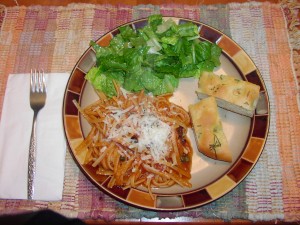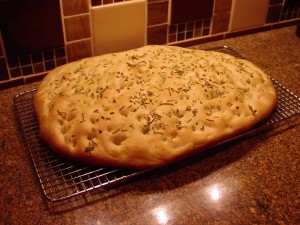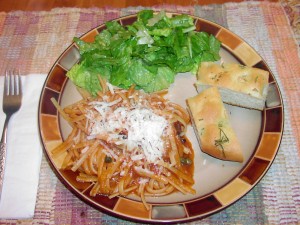I believe I have mentioned on earlier postings that I love pasta. And for some reason (excessive profit I believe it’s called) makers of fresh ravioli seem to think it’s OK to charge an arm and a leg for the same amount of product I can make for about a dollar. Now granted, I don’t have manufacturing, packaging, shipping, and delivery costs to consider, but really, the markup is astronomical. So when I can make my own ravioli with won ton wrappers, I feel great about myself. And coincidentally, the ravioli happens to taste pretty darn good too. And of course I know I am cheating by not making my own pasta, but you all know that finding shortcuts (aka cheating) whenever possible in the kitchen is what I strive to achieve! (I’ve learned to live with my little addiction. In fact, I no longer even ask for forgiveness in my evening prayers.)
So if you too want to save a little time and money, build yourself a batch of these incredible ravioli. And when you serve them tenderly blanketed with Butter and Sage Sauce, you won’t think to ask forgiveness for cheating a little in the preparation either. In fact, serve this dish to your loved ones, and they might forgive you just about anything! After all, it worked for me when I happened to throw out one of Mr. Cs favorite shirts. Even if the darned thing was 25 years old, the most putrid shade of green I had ever seen, was frayed and stained around the collar, and last fit him about 20 years ago; he loved that shirt. I simply asked for forgiveness at about the same time he took his last bite of the pasta on his plate. It really is very hard to stay mad at someone who is fully capable of denying a second helping!
- 1 large sweet potato
- 1 T. butter
- 3 T. minced shallot
- 3 T. half & half
- 3 T. grated Parmesan cheese
- pinch nutmeg
- kosher salt
- freshly ground black pepper
- wonton wrappers
- 1 recipe Pasta with Butter and Sage Sauce (under Main Dish Recipes)
Wash and dry the sweet potato. Stick it with a fork in 3-4 places, place it in a pan, and bake in a pre-heated 400 degree oven for 1 hour. Remove from oven and allow to cool until you are able to hold it in your hand comfortably. Peel and mash the sweet potato; set aside. In a large sauté pan, melt the butter over medium heat. Add the shallot and sauté for 1 minute. Add the mashed sweet potato and cook until the mixture is slightly dry, about 2 to 3 minutes. Stir in the half and half. Continue to cook for 2 minutes. Remove from heat and stir in cheese and the pinch of nutmeg. Season to taste with salt and pepper. (Don’t over salt because there is plenty of salt in the Butter and Sage Sauce.) Lightly flour a clean work surface. Set a small bowl of water nearby. Lay wrappers on the surface. Place a small scoop or heaping teaspoon of the sweet potato mixture on every other wrapper. Dip your finger in the water and wet the outside edge of each wrapper. Gently place the wrappers without the filling over the wrappers with the filling, wet edges together. Gently but firmly press down on the edges of each ravioli with the tines of a fork. Refrigerate in a single layer until ready to use. (This recipe makes about 11 ravioli.) When your sauce is ready* place the raviolis into boiling salted water one at a time (to prevent initial sticking). Reduce heat if necessary and cook for about 2 minutes. They will float to the top when they are ready. Gently lift out of the water and place on plates. Serve covered with Butter and Sage Sauce or any fairly simple pasta sauce.
*Hint: always have your pasta sauce ready before your pasta is finished cooking, not the other way around. Pasta is much more time sensitive then most sauces. And if possible, always cook your pasta al dente unless otherwise instructed. Mushy pasta is simply not very appealing.



